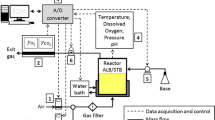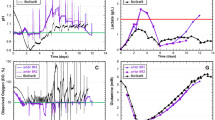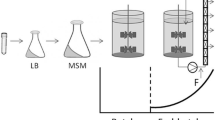Abstract.
Three industrially relevant fed-batch algorithms were applied to the production of recombinant proteins in Escherichia coli BL21 DE3. Starvation dissolved-oxygen (DO)-transient control sustained growth rates greater than those in pH-stat (0.16 h–1 versus 0.11–0.13 h–1) while feed-up DO-transient control better tracked the measured threshold for acetate production (µ~0.2 h–1). All controllers supported growth without acetate production, resulting in end concentrations of recombinant protein up to 20 times greater than in batch culture. Both DO-transient control systems were judged superior to pH-stat for their ability to detect and track the acetate threshold. Results also showed that although high cell density at the stationary phase is desirable, this parameter may be dictated by the choice of media and reactor design as opposed to controller type. Controller selection, however, has a great impact on the capacity to track the acetate threshold and therefore to enhance productivity without concomitant acetate production.
Similar content being viewed by others
Author information
Authors and Affiliations
Additional information
Electronic Publication
Rights and permissions
About this article
Cite this article
Johnston, .W., Cord-Ruwisch, R. & Cooney, .M. Industrial control of recombinant E. coli fed-batch culture: new perspectives on traditional controlled variables. Bioprocess Biosyst Eng 25, 111–120 (2002). https://doi.org/10.1007/s00449-002-0287-8
Received:
Accepted:
Issue Date:
DOI: https://doi.org/10.1007/s00449-002-0287-8




